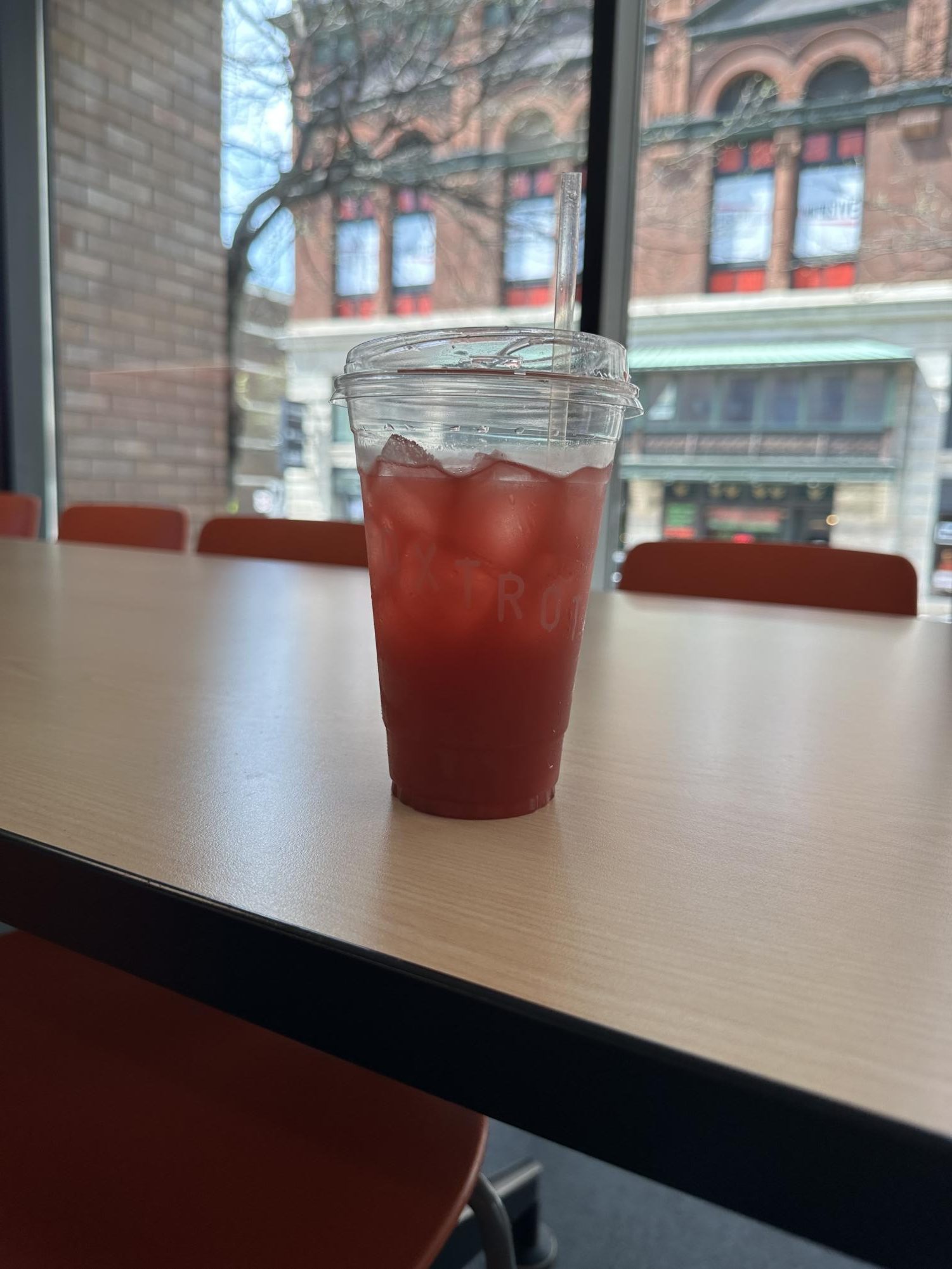Navigating the economy today is as complicated as selecting courses for next year. The tariffs are following the same pattern as Lana Del Rey’s album rollout: in, then canceled, then back in, then delayed, then paused, then in a small dose, and then who knows. Suits on Wall Street mutter words of panic, and grocery stores on Argyle Street raise the price of eggs. But when every dollar sign starts to look a little like a question mark, sometimes the most unconventional theories provide a guideline for where to go.
There are three main categories of recession indicators: leading indicators, coincident indicators, and lagging indicators. Leading indicators happen before a recession occurs, as people behave in preparation for difficult times. Coincident indicators happen as the economy falls, and lagging indicators happen in the aftermath.
Romans with a passion for finance consider all three categories, examining the credibility of the most common, curious, and outright crazy recession indicators.
The Hemline Theory
First coined in 1926 by University of Pennsylvania Economics Professor George Taylor, the Hemline Theory states that when the economy declines, the length of women’s skirts increases. For example, during the prosperous 1920s, women sported short, liberating skirts. By the time the Great Depression hit, skirt lengths grew—along with the public’s worries. This cycle repeated during the economic boom of the ‘60s when you could spot mini-skirts on every street corner, and mid-lengths arrived back on the scene in 1987 when the stock market suffered a crash.
Because of this historical correlation, economists and everyday people have linked fashion and finance for years. However, many economists also debunk this theory, stating that it has no statistics behind it and is purely coincidental.
“I think that theory is tied to more societal norms than actual economic prosperity,” Upper School math teacher Michelle Neely said. “Now, societal norms and economic prosperity may have some relationship, but those would be less connected to hemlines.”
Sophomore Charlotte Flandina, head of the Females in Finance Club, agreed. “That one is a little bit of a stretch,” she said. “I would say it’s more that fashion evolves over time and does not necessarily have anything to do with the economy.”
While the change in fashion trends has potential as a leading indicator, reflecting a lowering confidence in the economy, hemlines can also be categorized as a lagging indicator, occurring as a result of a recession.
Today, global spending on modest fashion is expected to grow at an annual rate of 6.6%. Social media reflects this: Pinterest reports a recent boom in searches for “modest fashion outfits,” while TikTok trends such as “old money” center around reserved clothing—including maxi skirts. Images of floor-length fashions and flowy fabrics fill every online shopping catalog. But according to our Latin sources, this shift gives us nothing to worry about.
The Lipstick Theory
Another fashionable product potentially predicting profits is lipstick. Economist Juliet Schor first introduced this theory in her 1998 book, “The Overspent American,” stating that when consumers' wallets are thin, they indulge in lesser luxury goods instead of big-ticket items, such as buying designer lipstick as an alternative to a designer purse. This fits in the category of a coincident indicator, since its purchases go up at the same time consumers’ income drops. Reinforcing this theory, Leonard Lauder, former chair and CEO of “Estée Lauder,” reported that lipstick sales increased after the 9/11 attacks as other consumer items dropped in revenue.
“I actually think that one is a good indicator,” Ms. Neely said. “If you’re looking at ways to still treat yourself but not spend a large amount of money, getting a new ‘Summer Fridays' is a way to do it.”
This year, the lipstick industry’s total revenue is expected to grow by 2.95% in the United States—in contrast, the S&P 500 dropped about 2% after the announcement of tariffs on April 2, and the United States GDP has contracted by 0.3% in the first quarter of the year.
The rise in lipstick sales may reflect its status as an inferior good, an item where its demand increases as its consumers lose income; other examples include generic brand groceries and fast food.
“We learned about [inferior goods] in [Economics]. That one definitely feels true,” senior Danny Goodman said. “You can take a look at the Kirkland Brand from Costco: back in 2022, that became massive because demand for it skyrocketed. People saw a 9.1% inflation [rate] and they started getting worried about layoffs, and then Kirkland became huge.”
However, Charlotte disagreed. “I don’t necessarily think [lipstick] has anything to do with the economy,” she said. “It depends on what kind of price point a person is in whether they buy an expensive purse or an expensive makeup pallet, or whatever you have that lipstick tends to be cheaper and more practical than.”
Champagne Sales
The opposite of an inferior good is a product like champagne. Champagne sales can indicate recessions because, during prosperous times, people have both spare income for nicer treats and also reasons to celebrate by popping open a bottle. In a recession, fewer people have the means or reasons to rejoice, so champagne sales decline.
“I think I believe that theory,” Charlotte said. “If the economy’s really good, that’s a celebration.”
On the flip side, because of its luxury status, those who enjoy the celebratory drink may purchase champagne in anticipation of a recession, attempting to spend their income while they still have it.
And in the current environment, consumers may also be trying to get ahead of higher prices.
Ms. Neely said, “I just read an article about [how] a lot of the wealthy are investing in champagne because of a fear of tariffs on French alcohol. I do think there is a relationship, that people are buying champagne and stockpiling it out of fear of more expensive costs coming.”
This idea of hoarding places champagne as both a leading and coincident indicator, with a boom before a recession and a drop as one occurs.
“You can definitely tell that consumers are being more choose-y about where they spend and what they buy,” Danny said.
Garbage Theory
The Garbage Theory highlights the belief that, during times of economic prosperity, people produce more trash because they have more income to spend on replacing those discarded items. But during times of recession, people tend to salvage every last one of their resources, creating less waste. Statistics back this idea: A 2010 Bloomberg study showed an 82% correlation between trash and GDP.
Ms. Neely believes this is a quality indicator. “I have a couple books that I’ve read about trash, and they say that garbagemen are the first ones to be aware of a recession because they see [fewer] things in the trash,” she said.
“You see it in the neighborhoods. Where I live, there’s big TV boxes, computer boxes, and toys [in the trash],” Ms. Neely added. “When people do have a lot of money, they are replacing those things, and then when we hit the recession, you don’t see those big box items sitting at the curb.”
Recession Pop
The concept of Recession Pop began during the Great Financial Crisis in the late 2000s and early 2010s, when club anthems like “Low” by Flo Rida and T-Pain, “Die Young” by Kesha, and “Thrift Shop” by Macklemore and Ryan Lewis (a song literally about buying cheap items) dominated the charts. The belief is that when the stock market drops, so does the beat, and upbeat songs take over the music industry, singing about enjoying the moment, appreciating the little things in life, and partying hard.
Danny said, “It’s this type of music that is somewhat grating, but it feels really comfortable too.”
From the craze of Brat Summer to the recent return of Lady Gaga, today’s most popular songs have been touching on similar themes as they did during the Great Financial Crisis, and many have feared that good music might signify a bad economy.
“The people who are making that art and writing those songs, they have their finger on the pulse of society. Perhaps they are a little more cognizant,” Ms. Neely said. “I think it’s a legit ‘canary in the coal mine.’”
This idea places Recession Pop as a hybrid between a leading and lagging indicator, where the artwork is both anticipatory and reactionary to reality.
“Music is often a reflection of what the times are like,” Danny said.
Underwear Theory
Alan Greenspan, Chairman of the Federal Reserve from 1987 to 2006, first popularized this theory as he searched for reliable financial indicators.
He surmised that underwear is a basic necessity, so a drop in sales would reflect major changes in consumer spending rather than a shift in trends, making it a strong link to economic health and consumer confidence.
“I’m gonna go with Alan Greenspan because he’s a smart man. That makes sense,” Ms. Neely said. “It could be underwear, it could be socks. You need these things.”
Danny said, “I wouldn’t put it past anybody that that’s somehow true, but I don’t think so.”
For those who do believe in this theory, the underwear industry is expected to grow annually by 2.69%, which hopefully indicates growth in our bank accounts as well.
Potential Latin Indicators
From eating habits to clothing choices, the behavior of Romans can also reflect a changing economy.
“A Latin recession indicator, Neely-version, would be students eating in the building versus going out to get lunch at Chipotle or Small Cheval,” Ms. Neely said. “[US Receptionist Sami Aday] would see a lot less Chipotle passing by him at the front desk.”
“I think it would be the Kiosk [sales],” Charlotte said, describing the beloved in-school cafe as a possible lagging indicator.
Between dropping stock values, rising sales of inferior goods, and club classics on every playlist, financial fear looms over many people’s thoughts. Our Roman economists offer words of advice during this confusing time.
“You’ve got to find a way to find some joy in your world,” Ms. Neely said. “If it’s taking a walk with friends, if it's going to the yoga studio, if it's running a couple miles, whatever it is, find ways to treat yourself.”
Danny took a “fortune favors the bold” attitude, explaining how those who take educated risks during recessions wind up wealthier in the aftermath. “I was just looking through ‘The Wall Street Journal,’ and even in a time of economic turmoil, the best people at finding pockets to make money are actually going to achieve more of their goals,” he said.
“We’re all very young, so there’s not much to do,” Charlotte said. “Be smart with your money. When the economy goes up again, invest [in stocks], and always save. Saving is very important.”









